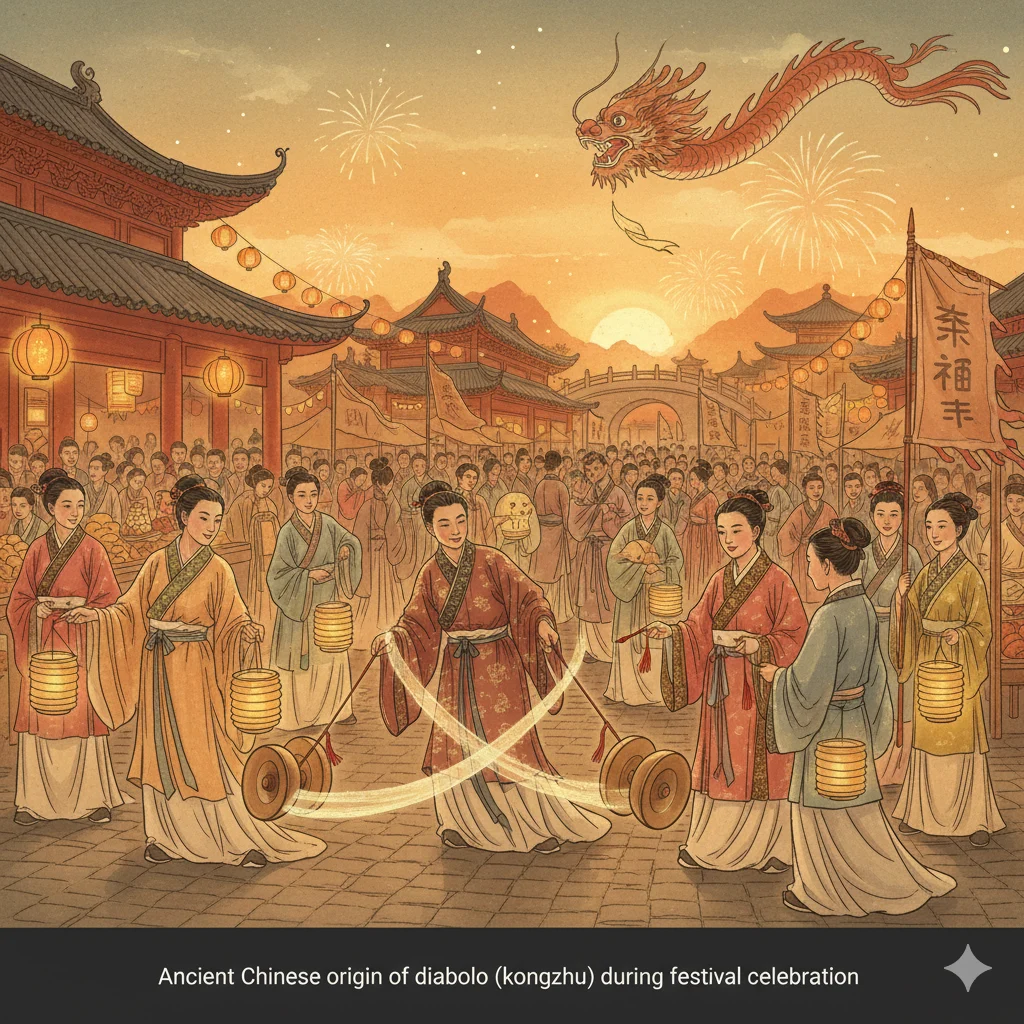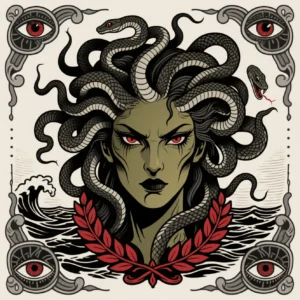The term “diabolo” may sound exotic, mysterious, or even intimidating, but it’s far from a dark or scary word.
In fact, it represents one of the most fascinating skill toys in history—an object that connects ancient Chinese traditions, European circus arts, modern social media, and even online slang.
Whether you’ve seen someone perform diabolo tricks at a festival, scrolled past diabolo videos on TikTok, or spotted the word in a gaming chat, you might be curious what it truly means.
This guide covers everything you need to know about diabolo—its definition, history, uses in conversation and culture, similarities with other skill toys, and even its metaphorical meaning.
By the end, you’ll have a deep understanding of diabolo as both a physical object and a symbol of creative play.
Definition & Meaning
At its most basic, diabolo is a juggling prop that consists of an axle and two cups (or discs) attached to it. It is spun, tossed, caught, and manipulated on a string stretched between two sticks. The word comes from the Greek diabollo, meaning “to throw across.”
Literal Definition
- Part of Speech: Noun
- Pronunciation: dee-AH-bo-lo
- Primary Meaning: A juggling or skill toy also called a “Chinese yo-yo.”
Extended/Metaphorical Meaning
In some casual contexts, particularly in online slang, “diabolo” may be used metaphorically to describe a chaotic but entertaining situation, something that’s “spinning out of control” yet fun.
Examples in Dialogue
Chris: “I just learned how to do diabolo tosses!”
Jordan: “No way—show me a video, that’s awesome!”
In slang context:
Player1: “This game’s final level was pure diabolo!”
Player2: “Haha exactly, total chaos!”
Background & History

The history of diabolo spans centuries and continents.
Ancient Chinese Origins
The diabolo originated in China more than 2,000 years ago, known as Kongzhu (空竹). Early versions were made of bamboo and produced a whistling sound when spun—believed to ward off evil spirits.
Spread to Europe
Missionaries and traders brought the toy to Europe in the 18th and 19th centuries, where it became known as the “devil on two sticks.” The modern name “diabolo” was coined by French engineer Gustave Philippart in the early 1900s.
Modern Evolution
Today, diabolo equipment uses advanced materials like rubber and carbon fiber, allowing for longer spins and more complex tricks. It’s a staple of street performance, circus acts, and competitive juggling.
Cultural Significance
In Asia, diabolo is performed during festivals and New Year celebrations. In Europe, it has strong ties to circus schools and performing arts academies. Social media has given diabolo new life, with viral challenge videos and tutorials reaching millions.
Usage in Various Contexts
1. Performance Arts
Diabolo is an integral part of circus shows. Artists perform tricks like:
- Elevator – Diabolo climbs the string.
- Suicide – Stick is released and caught again.
- Grind – Diabolo rests on a stick.
2. Social Media & Internet Culture
Hashtags like #diabolo, #circusarts, and #juggling trend regularly. Short-form videos showcase creative routines.
3. Gaming and Chat Slang
Diabolo is sometimes used as a slang term for controlled chaos:
Gamer 1: “This dungeon is a diabolo mess.”
Gamer 2: “Agreed—feels like juggling five bosses at once.”
4. Education & Therapy
Schools use diabolo to develop hand-eye coordination and focus. Occupational therapists incorporate it into sessions for motor skill training.
Common Misconceptions & Clarifications
- Myth: Diabolo means devil worship.
Truth: It simply means “throw across” in Greek. - Myth: Only professionals can do it.
Truth: Beginners can learn basic tricks in minutes. - Myth: It’s dangerous.
Truth: When used safely, it’s no more dangerous than a yo-yo.
Similar Terms & Alternatives
| Term | Meaning | Use Case |
|---|---|---|
| Diablo | Spanish for devil | Not a toy, unrelated |
| Yo-Yo | Toy on string | Moves vertically, simpler tricks |
| Kendama | Ball-and-cup skill toy | Focus on balance, Japanese origin |
| Poi | Spinning performance art | Often with fire, from New Zealand |
How to Respond to This Term
When someone mentions diabolo, your response depends on the context:
- Casual/Friendly: “That’s so cool! Can you teach me?”
- Humorous: “Don’t break any windows with that thing!”
- Supportive: “It must take a lot of skill—impressive!”
- Professional: “Would you be interested in performing at our event?”
Regional or Cultural Differences
- China: Deeply tied to tradition and festivals.
- Europe: Popular in France, Italy, and UK juggling communities.
- USA: Gaining traction in circus schools and hobbyist clubs.
Comparison with Similar Terms
| Term | Difficulty | Trick Variety | Popularity |
|---|---|---|---|
| Diabolo | Moderate to High | Very High | High among performers |
| Yo-Yo | Beginner to Pro | Moderate | Very High worldwide |
| Flower Sticks | Beginner | Moderate | Popular at festivals |
| Poi | Moderate | High | Popular in flow arts |
Usage in Online Communities & Dating Apps
While not common as a dating slang term, people on dating apps might mention diabolo as a hobby:
Bio Example: “Weekend diabolo performer, lover of circus arts, and coffee addict.”
On Discord or Reddit, communities discuss diabolo techniques, share videos, and organize meetups.
Hidden or Offensive Meanings
Diabolo is not inherently offensive, but its similarity to “diablo” can confuse people. Always clarify if the context is about the toy, not religion.
Suitability for Professional Communication
Using “diabolo” is appropriate in professional settings related to:
- Entertainment
- Performance booking
- Education (PE class, skill workshops)
Avoid slang/metaphorical usage in formal writing.
FAQs
Q1: What is diabolo made of?
A: Modern diabolos are made of rubber, plastic, or metal with precision axles.
Q2: Is diabolo good exercise?
A: Yes—it improves coordination, burns calories, and builds focus.
Q3: How do I learn diabolo tricks?
A: Start with online tutorials and practice basic tosses.
Q4: Can kids play with diabolo?
A: Yes, beginner sets are child-safe.
Q5: Is diabolo popular worldwide?
A: Yes, especially in Asia and Europe.
Q6: Can diabolo be dangerous?
A: Only if misused—use safe space and be mindful of surroundings.
Q7: Is there competitive diabolo?
A: Yes, world championships exist.
Conclusion
The word diabolo carries centuries of tradition, skill, and creativity. It’s not just a toy but a performance art, a hobby, and a way of expressing oneself. Whether you encounter it in conversation, online slang, or at a festival, you’ll now know what it means and why it matters.



